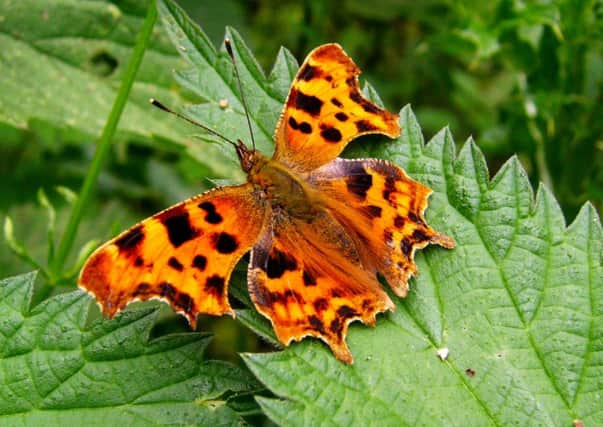WILDSIDE: Butterflies reap rewards after improved summer


As the British Trust for Ornithology’s (BTO) Garden BirdWatch data show, none has responded more dramatically than the small tortoiseshell.
It was touch and go for our butterflies, after last year’s wet summer and this year’s cold spring.
Advertisement
Hide AdAdvertisement
Hide AdHowever, the hot, dry weather at the beginning of July was a turning point for many species, including the small tortoiseshell.
Although their numbers normally increase at the end of the summer, with new butterflies emerging from the second brood, the BTO’s Garden BirdWatch reporting rate has exceeded expectations for this time of year, and is double that seen this time last year. A butterfly familiar to many of us, the small tortoiseshell is one of the most widespread butterflies in the UK, ranging from the lowlands of England to the Scottish islands and highlands.
Despite having suffered a slight decline in abundance since the 1970s, small tortoiseshells are still a common sight, and their numbers seem to have stabilised in recent years. This year’s boost for small tortoiseshells is probably due to three reasons.
Firstly, the long period of dry, hot weather has been good for both butterflies and the flowering plants they feed on. Secondly, there may have been an influx of immigrant small tortoiseshells from continental Europe, making the most of the warm weather and boosting our UK population. Finally, it is possible that the parasitic fly sturmia bella, thought to be a partial cause of the overall decline of small tortoiseshell, is at a low point in its population cycle.
Advertisement
Hide AdAdvertisement
Hide AdClare Simm of the British Trust for Ornithology, said: “At this time of year, small tortoiseshells are feeding up before going into hibernation during the colder months.
“They love nectar-rich flowers and, in gardens, can be found on plants such as buddleia, valerian, hebe and Michaelmas daisies. Once the weather starts to cool, small tortoiseshells will begin to look for somewhere warm to hibernate, which may include your house.”
If you find small tortoiseshells or other butterfly species, in your house, don’t leave them there since once the central heating turns on, they wake up from hibernation and deplete valuable food reserves.
However, don’t put them outside, as the cold will be fatal.
Advertisement
Hide AdAdvertisement
Hide AdIt is best to ‘rescue’ them and place it in an unheated outbuilding or shed. The temperature will remain more stable there and a butterfly should hibernate successfully until the weather gets warmer.
So there you are; your good deed for nature! Watch out too for peacocks, red admirals, and the less common comma.
Professor Ian D Rotherham, researcher, writer and broadcaster on wildlife and environmental issues, is contactable on [email protected]; follow Ian’s Walk on the Wildside, www.ukeconet.org for more information.